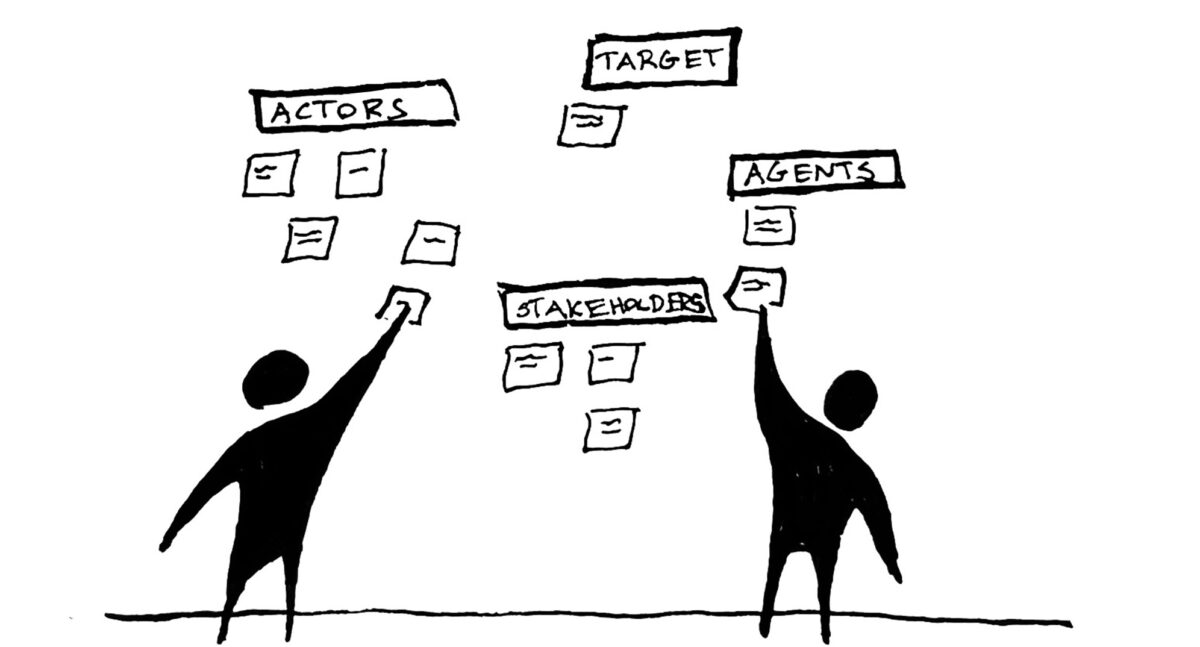Policy field mapping is a visual diagram used to bring clarity to the relationships between institutions in the policy field of interest. Sometimes these relationships are formalized through policy and government tools, like Memoranda of Understanding or grants. Other times the relationships are informal, based on history or affiliation. This tool supports the identification of domains of work, accountability, relationships, and resources within the policy field.
Not only useful for the presentation of connections between institutions, but policy field mapping also allows their users to take the perspectives of various system stakeholders, increasing empathy and understanding.
Steps:
- List the specific federal, state, and local institutions (public, private, and nonprofit) that could be involved in implementing a program or policy. Using the internet and conversations, conduct research on the important institutions within the policy field to identify:
- Which organizations have a real interest in this policy/program? (Interest can mean staff expertise, organizational reputation, assessment of the significance of implementation).
- Where does administrative authority lie? (Authority derived from law or funding or both).
- On a blank surface (ex: whiteboard, large paper), create a space for two columns- labeling them Column One and Column two. Write the name of the institutions in the policy field in Column One. Repeat the list in Column Two.
- Connect the organizations from Column One with those in Column Two using different colors or line strokes to denote the following formal relationships:
- Funding
- Legal Accountability
- Service Linkages
- Other
- Connect the organizations from Column One with those in Column Two using different colors or line strokes to denote the following formal relationships:
- Create a visual representation of the field and the relationships. On a blank surface:
- Divide the space into horizontal stacked sections to denote the level of operation or governance (ex: federal, state, local).
- Use a different color Post-it note or shape to designate public, private, and nonprofit organizations.
- Indicate high levels of authority by using Post-its in different shades of the same color or changing the fill or outline of the shape.
- Connect the institutions with the lines developed in step 2.
Considerations:
- Developing a policy map collaboratively or sharing with others after its creation is helpful for ensuring that one’s individual beliefs or perspectives are validated.
- Though there are vertical and horizontal bounds, be sure to consider the bidirectionality of hierarchical relationships. “Research documents that each level of government – national, state, and local – often possess the ability to exert influence” (Sandfort & Stone, 2008, p. 132).
- When considering the different connections between institutions, pay attention to the important beliefs and resources that might also influence the relationships between organizations.
- It may be helpful to digitize the map after its creation. The intentional use of icons or colors can support in communicating the concepts of the map.
References:
- Sandfort, J., & Stone, M. (2008). Analyzing Policy Fields: Helping Students Understand Complex State and Local Contexts. Journal of Public Affairs Education, 14(2), 129-148. Retrieved from www.jstor.org/stable/40215806



